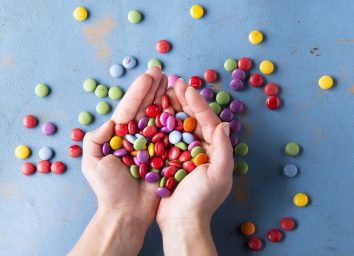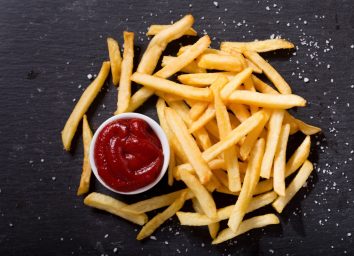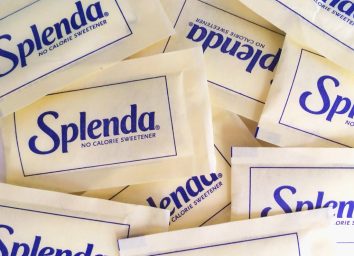14 Foods You Eat Every Day That Are Weight-Loss Enemies
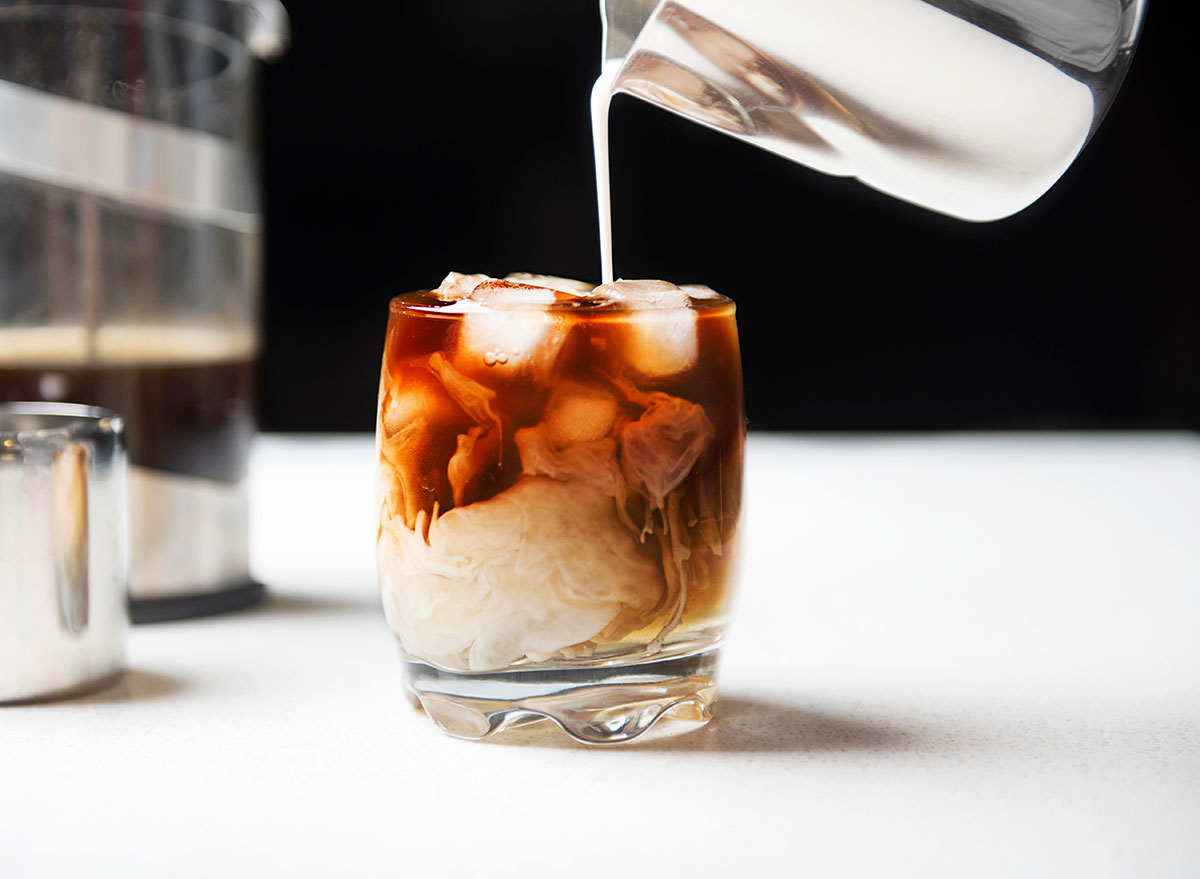
How can you lose weight if you don’t know which foods are causing your weight gain to begin with? It’s not as easy of a task as it may sound. There are foods that you’re eating every day that are seemingly innocent but are actually behind the increasing number on the scale.
At face value, some of these foods pass as being healthy—which means you may be eating more of them than you typically would allow yourself with for unhealthy foods. Eating any excess of calories—even the “good” kind—will contribute to weight gain. On the other hand, there are a few foods on this list that you know aren’t good for you, but that you still eat regularly. If you want to lose weight, you’ll either need to cut back on your consumption and eat them in moderation or cut them out completely.
Banish these unhealthy foods from your pantry. You can’t eat what isn’t in your home. Read on, and for more on how to lose weight, you won’t want to miss these 15 Underrated Weight Loss Tips That Actually Work.
Breakfast Cereals and Even Certain Instant Oatmeals
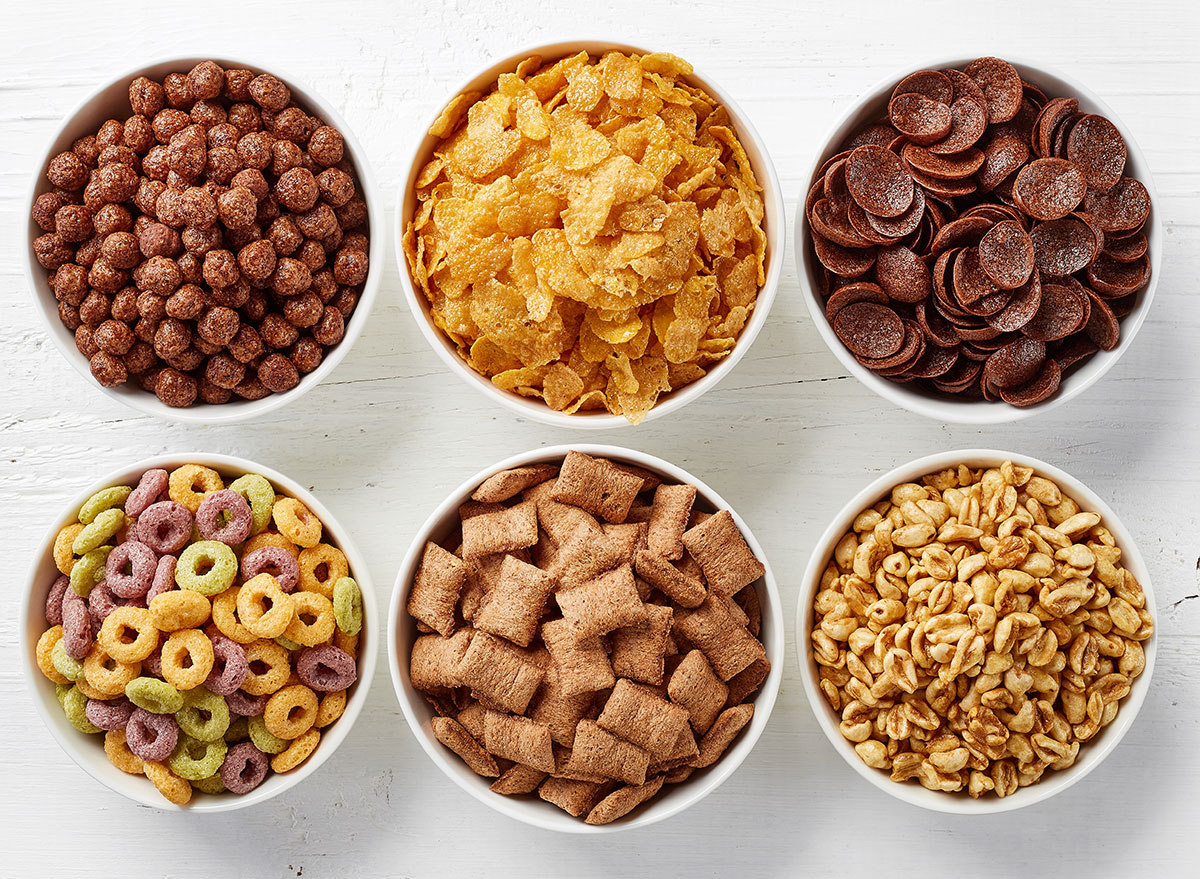
Generally, breakfast cereals are boxes of empty sugar calories. Sure, there are some that contain dietary fiber, but it’s often just a couple grams (not nearly enough to do much) and even these can be loaded with sugar. (See: The Unhealthiest Cereals on the Planet.) Instant oats are also good as a snack or breakfast option, but even the hallowed oatmeal can be compromised with secret additions. You need to be wary of the ingredients list, otherwise you can find yourself eating The Unhealthiest Oatmeals On The Planet. Point being: if you are misled into thinking your “whole grain” breakfast is healthy for you, thus eating it every day or large portions of it, you could end up gaining weight as most of the calories come from nutrient-lacking added sugar rather than the grains themselves.
QUICK TIP: If your oats need a flavor boost, add fresh fruits, a touch of honey, or an ounce of nuts to your bowl instead of cane or brown sugar.
Canned Cream-Based Soups
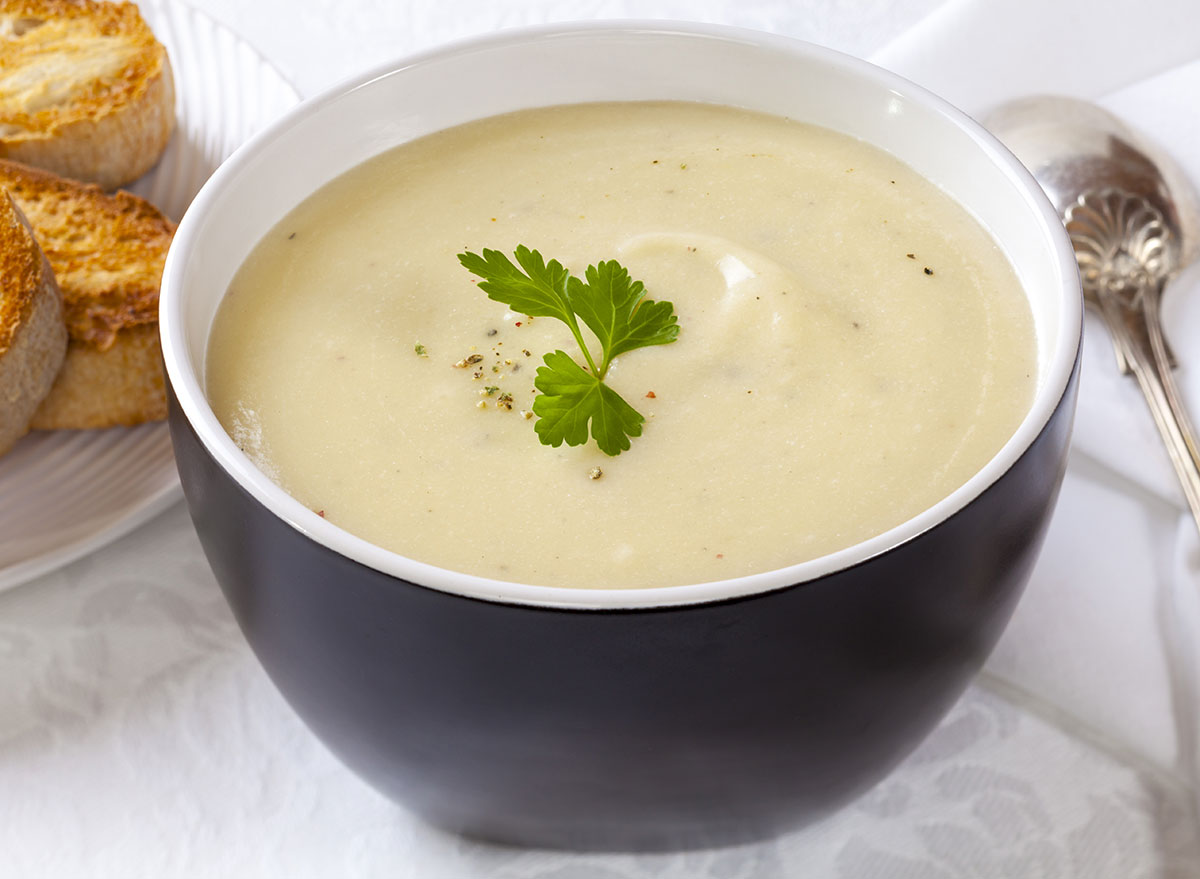
Most canned soups are loaded with sodium, but the cream-based ones carry other things among their empty calories—fillers like hydrolyzed proteins, food dyes, and corn syrup. High-sodium soups won’t just cause belly bloat and water weight gain, but consuming these along with other high-sodium foods over time can contribute to health issues such as high blood pressure.
QUICK TIP: Look for protein-based soups like black bean soup, which is high in fiber. Avoid canned soups. Add avocado to get some healthy fat. And look for reduced-sodium versions.
Deli Meats
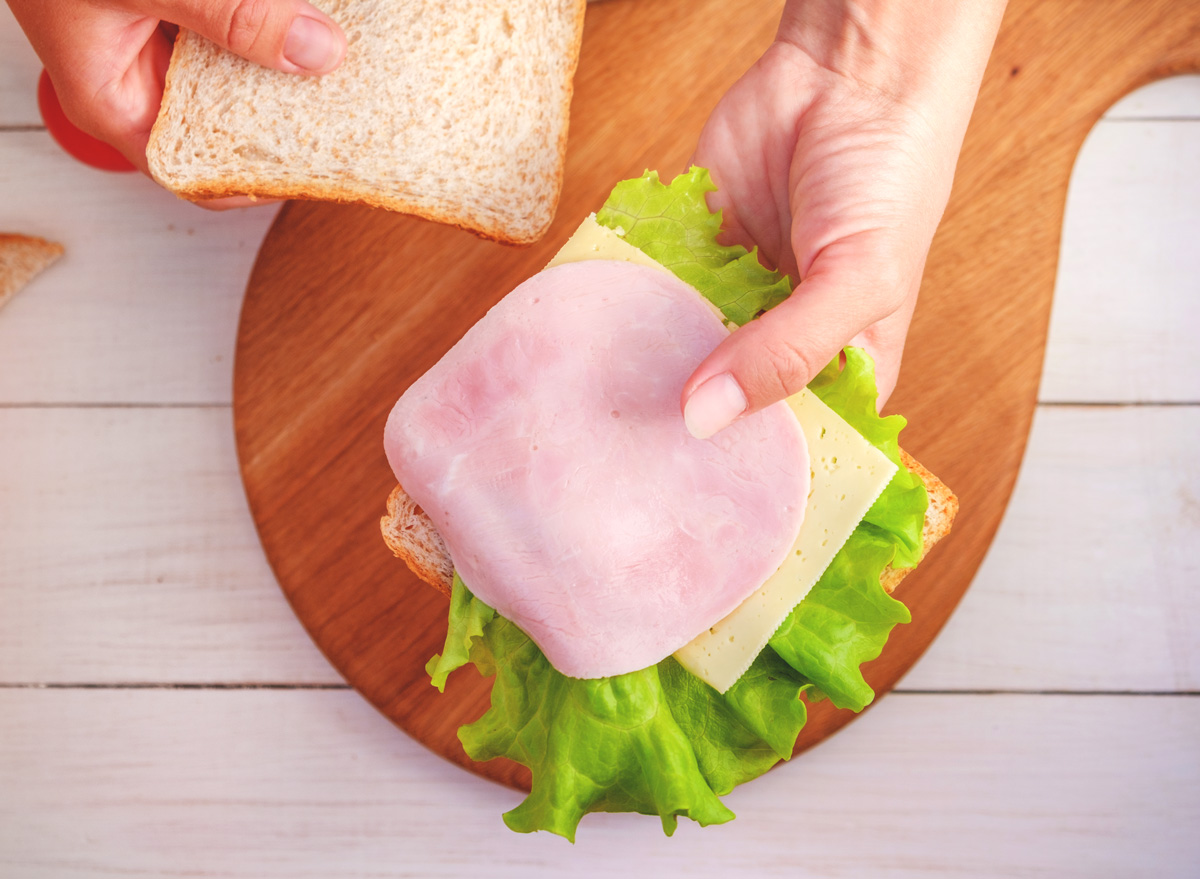
The connection between salt-, sugar-, and chemical-laden processed meats and chronic disease risk is strong and consistent in scientific research. According to a study published in Nutrition Journal, those who eat lunch meat tend to have higher intakes of calories (which, obviously, leads to weight gain), sodium, and saturated fat compared to non-consumers. If you eat meat, it should be pure—just as you want your own muscles to be, advises David L. Katz, MD, MPH, who is director of the Yale University Prevention Research Center and president of the American College of Lifestyle Medicine.
Frozen French Fries
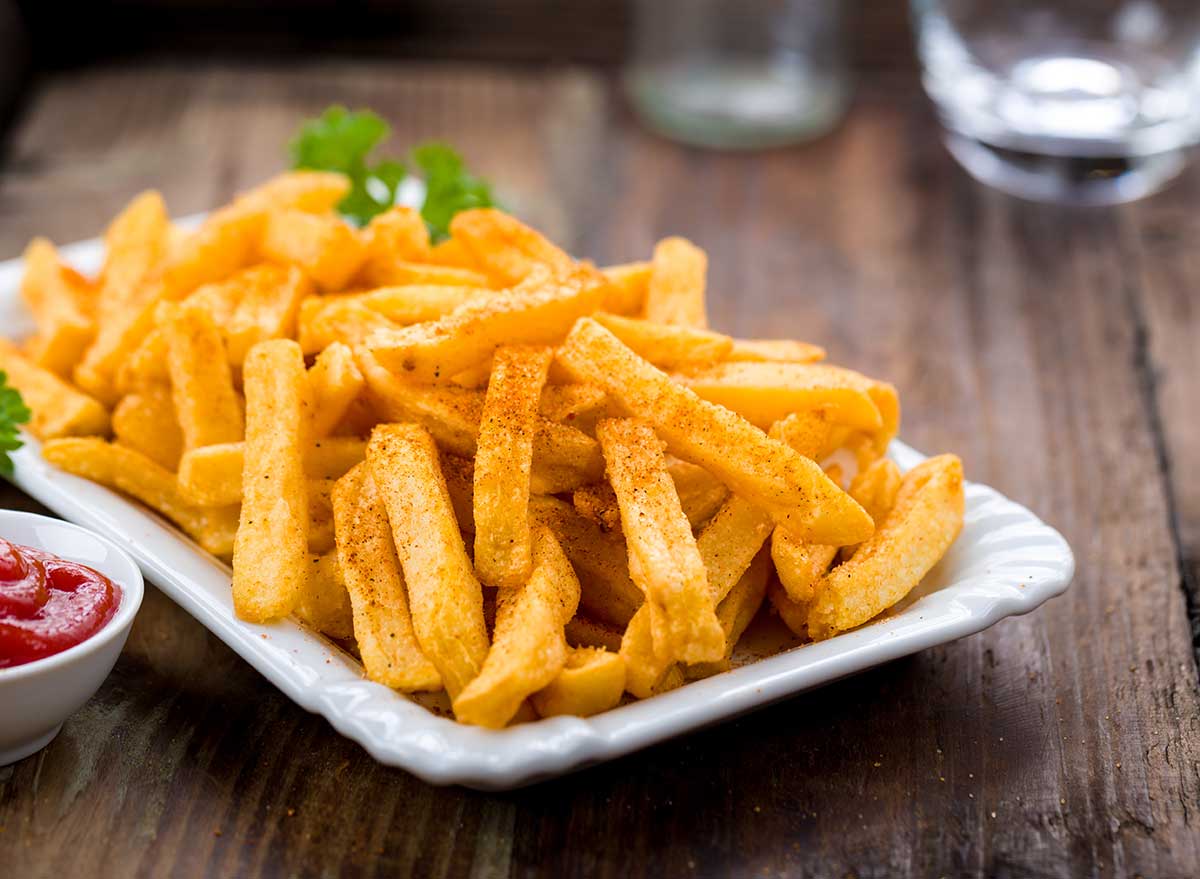
There’s something almost magical about the effects of fried spuds on your body’s fat-storage system. One long-term Harvard University study, published in the well-respected New England Journal of Medicine found that people who ate fries regularly gained more than three pounds of body weight every four years; over the course of the study, the French fry eaters gained 15 pounds of belly flab from fries alone!
Fruit Juice
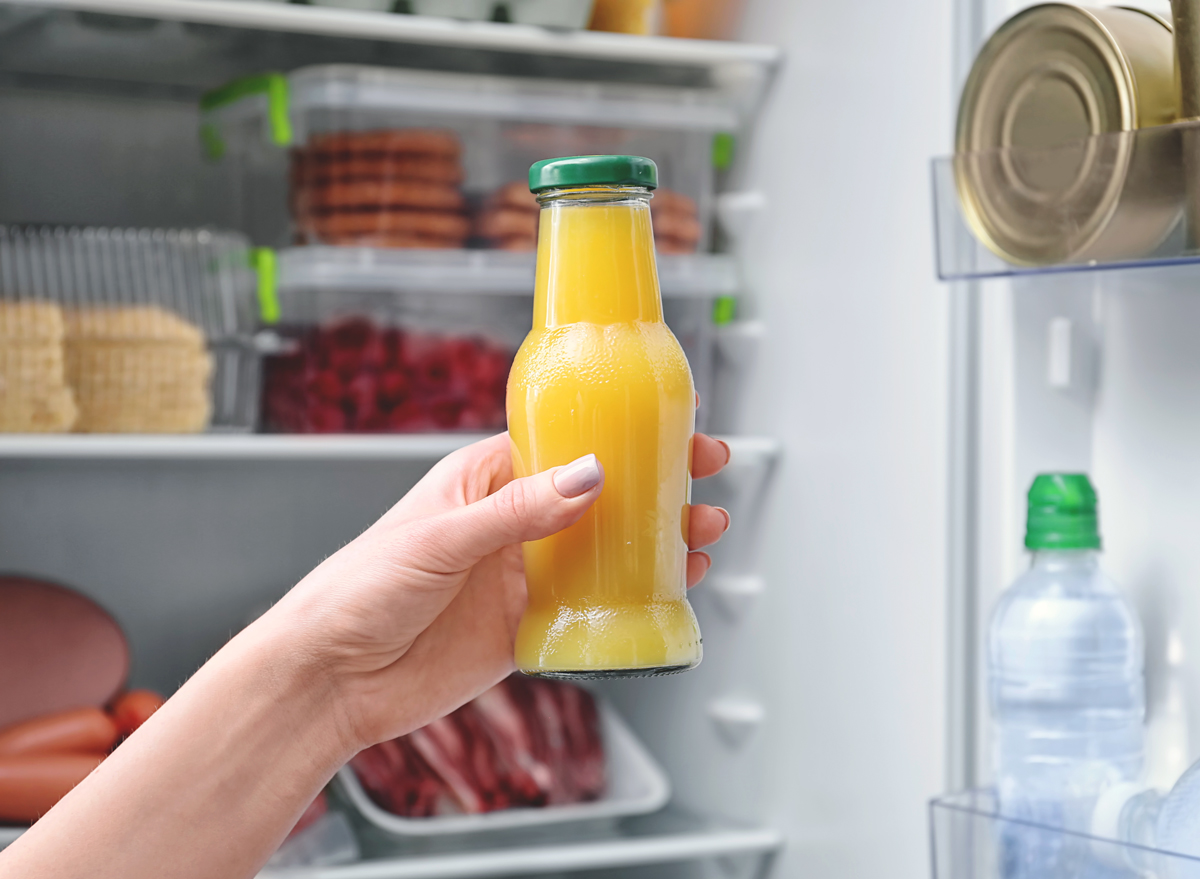
“Talk about turning a good food bad,” says Leah Kaufman, MS, RD, CDN, a New York City-based registered dietitian. “When you transform produce into juice, you take away its fiber—one of the major benefits of consuming whole fruits and vegetables. What you wind up with is a drink that’s so concentrated with sweetness, it can have as much sugar as a soda.” Consuming fruit juice on occasion isn’t terrible for you, but drinking it too often can have a negative impact on health and body composition. A cup of grape juice, for example, contains nearly the same amount of sugar as two Dunkin’ Donuts Glazed Cake Donuts, and a large OJ from McDonald’s has as much sugar as 25 Lifesavers Gummies.
QUICK TIP: Eat your fruit whole to get the fiber and more vitamins than juice has. While all fruit can help you lose weight, some research has begun to show that some fruits are actually better at fighting belly fat than others. Which ones? Look for red or reddish: Raspberries, strawberries, blueberries—they’re packed with polyphenols, powerful natural chemicals that can actually stop fat from forming.
Granola
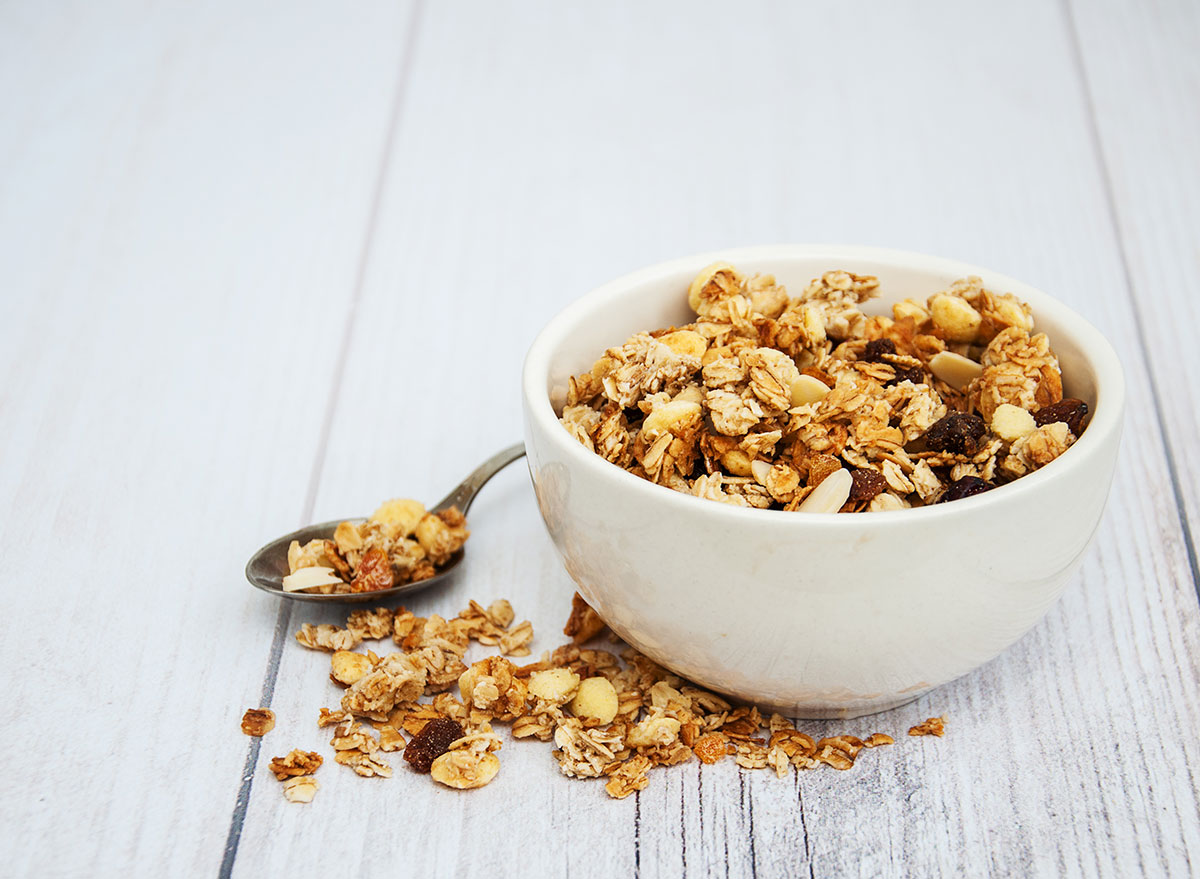
“This is one of our leading health-food impostors!” says Lisa Moskovitz, RD, founder of The NY Nutrition Group. “One tiny cup of granola has nearly 600 calories, 30 grams of fat, and 24 grams of sugar. That’s the equivalent of starting your morning with two slices of cheesecake.” Because there are benefits of consuming high-fiber whole grains, a meta-analysis found a correlation between whole grain intake and lower body mass index (BMI), you can eat granola as long as it’s one of The World’s 10 Healthiest Granolas.
High-Calorie Bottled Fruit Smoothies
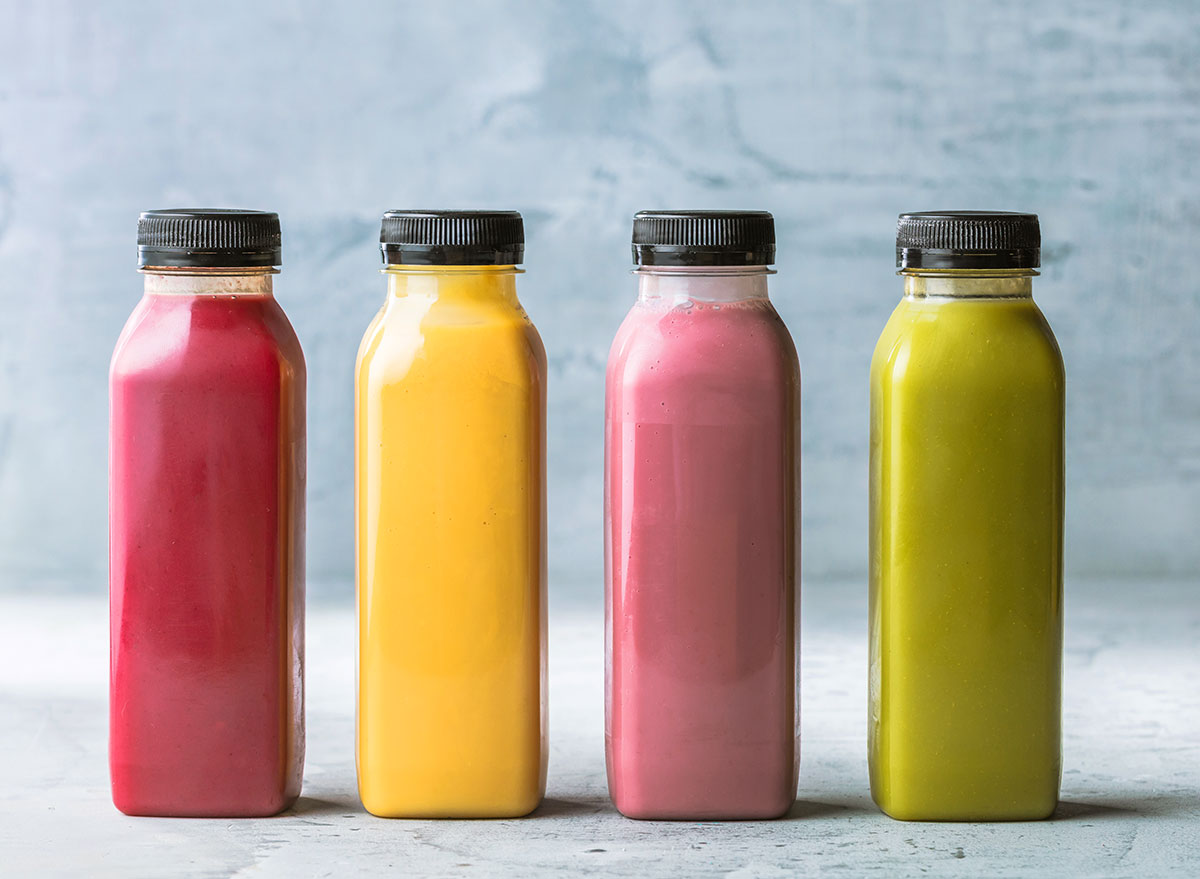
A fruit smoothie sounds like a virtuous choice for an afternoon pick-me-up, but be forewarned: Many store-bought, bottled smoothie options are little more than bulked-up fruit juice with almost no fiber, making them more dessert-like than diet-friendly. Some contain as many as 440 calories, nearly a third of what the average woman on a 1,500-calorie weight-loss diet needs in an entire day. Not to mention over 50 grams of sugar—that’s more than you’ll find in 4 scoops of sherbet.
Ketchup

A measly two tablespoons have up to eight grams of sugar and 40 calories! And most of those calories come from high-fructose corn syrup (followed by plain-old corn syrup), which has been shown to increase appetite and, over time, lead to obesity and diabetes.
Low-Fat Packaged Baked Goods
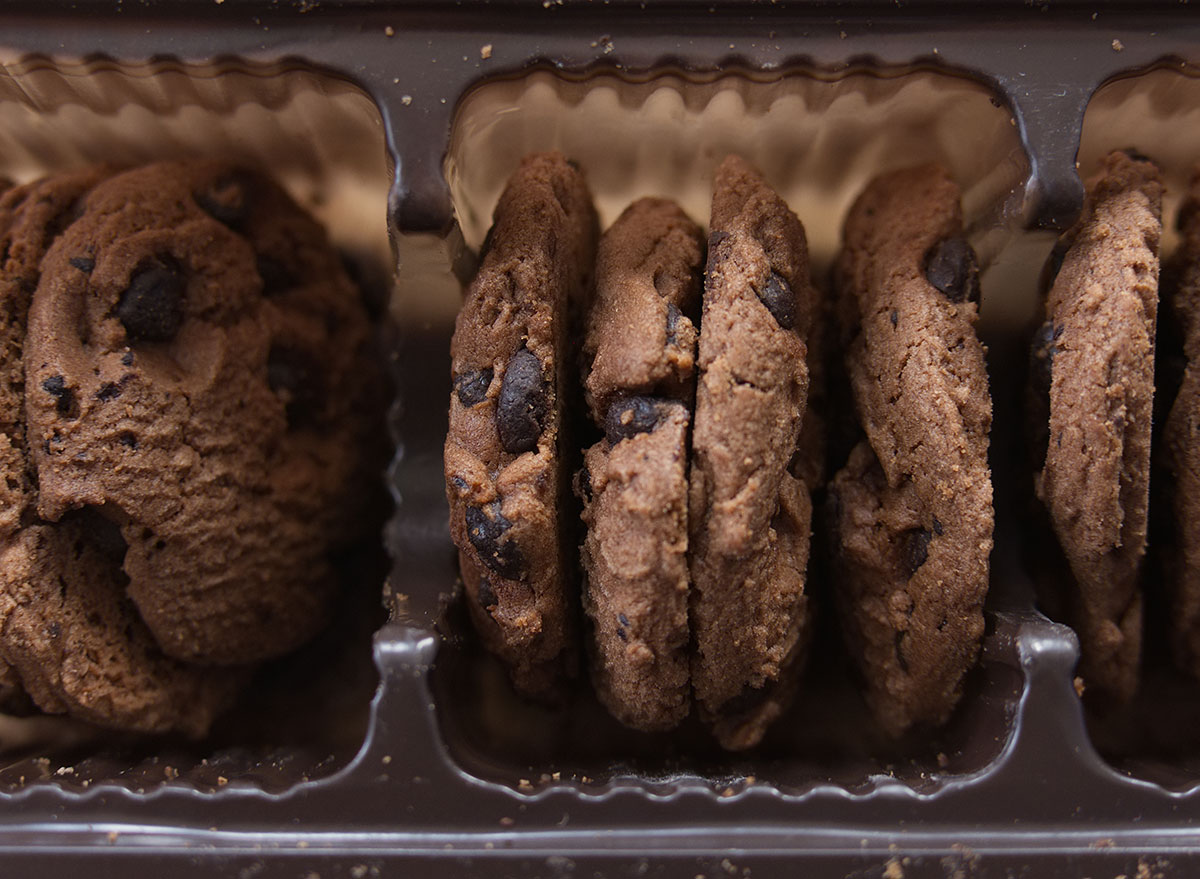
Typically, these items are extensively processed and are packed with chemicals that are added to try to achieve the consistency or reproduce the flavor of the full-fat models. You are better off indulging in a smaller portion of food naturally high in fat or sugar than ingesting an artificial substitute. And in most cases, the real deal tastes better, is more satisfying (so you don’t end up overindulging in a “healthier” alternative), and doesn’t cause the gastrointestinal upset that can be associated with highly processed foods.
Nutella
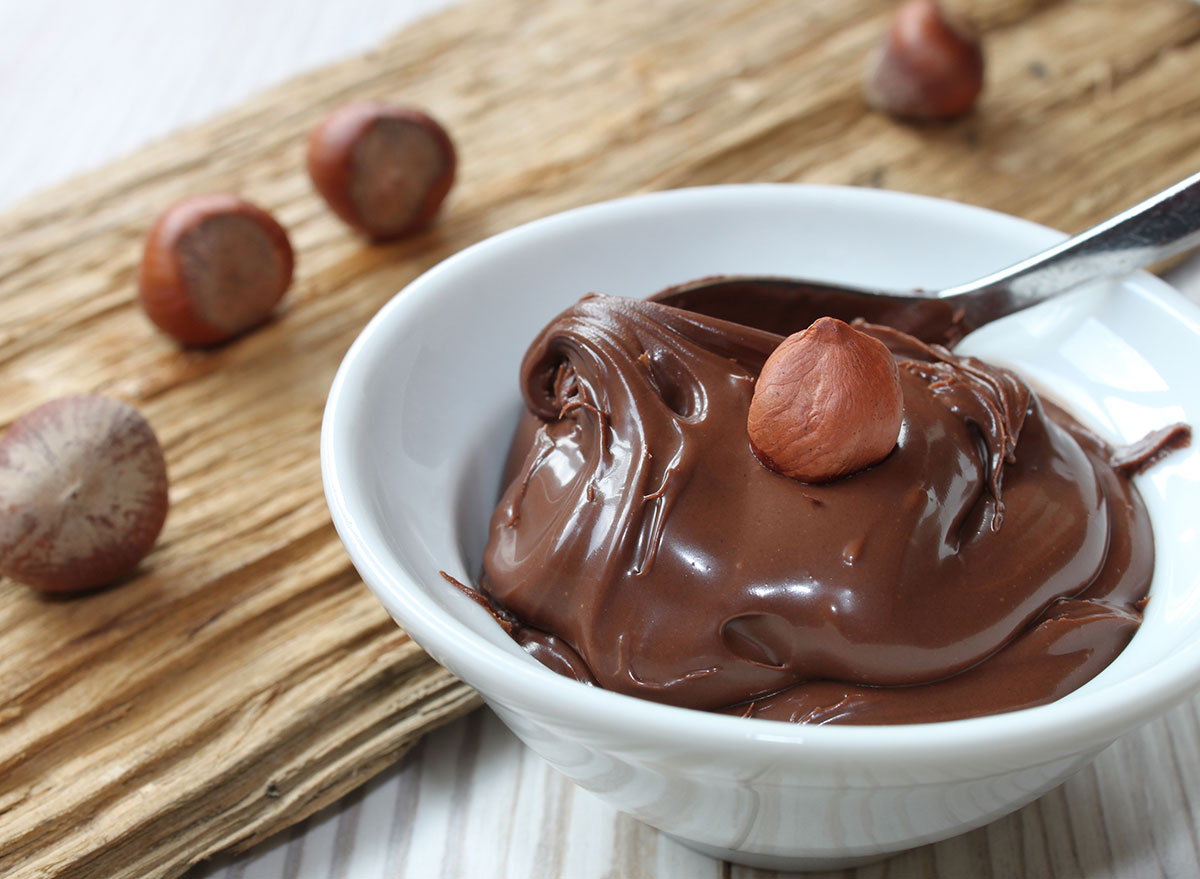
It may sound nuts, but this “hazelnut spread” is primarily made of sugar and palm oil with almost no actual nuts. So don’t be fooled into thinking it’s worth space in your pantry. With more than 20 grams of added sugar and only two grams of protein, the spread just winds up at your waist.
Nutrient-Stripped Bread
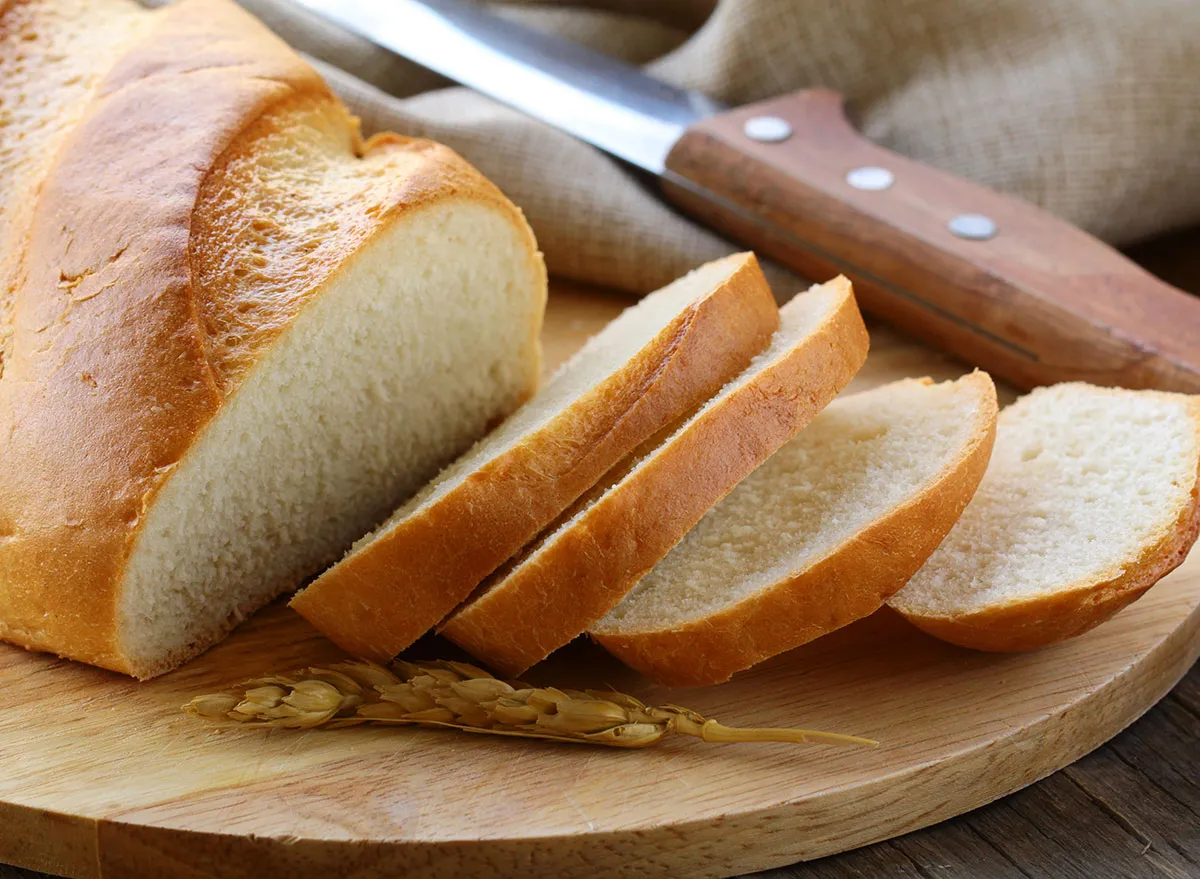
If you have white bread in your cupboard, feed it to the ducks at the lake. Then, go to a health-food store and score some sprouted grain bread. It’s heartier, tastes better, and is loaded with fiber. You need more fiber. We all do. White bread, by contrast, has been bleached and stripped of its bran and germ, the elements of the grain that contain beneficial nutrients.
“White bread isn’t very filling, has almost no nutritional value, and is converted into sugar once you eat it,” says registered dietitian Jim White, RD, ACSM, owner of Jim White Fitness and Nutrition Studios. “Like table sugar, it then spikes insulin levels, which promotes fat storage,” says White. Don’t get caught up in phrases like, “made with whole grains.”
This catchy phrase can make you think your bread is a healthy choice, but it only means that the bread is made up of a mixture of whole-wheat flour and some other less-nutritious flour that won’t benefit your health. Also, keep an eye out for the words “bleached flour” on ingredients lists, too. Bleaching adds chemicals to the bread and strips away vital nutrients.
Energy Bars
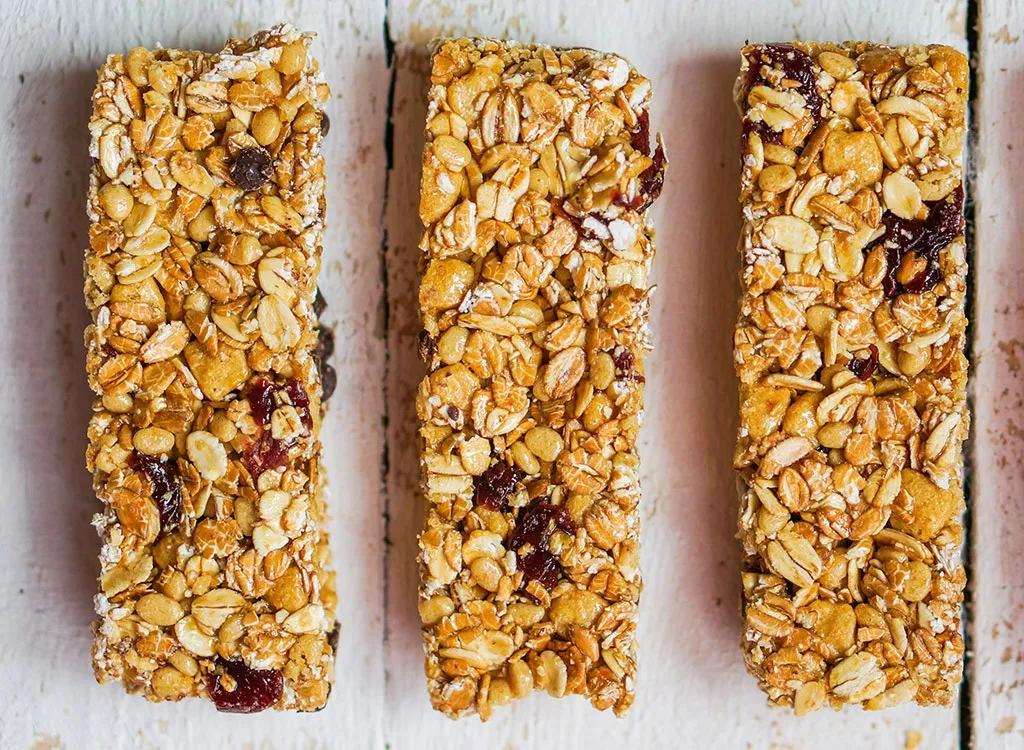
For the amount of calorie-dense carbohydrates and fat they contain, you might as well eat a candy bar. Many of these energy bars are packed with simple sugars, and they aren’t quite filling enough to substitute for a meal or snack.
Soda—Even Diet Soda

Most sodas contain phosphorus, which binds to calcium and increases calcium loss, which is terrible for bone health. Plus, a single can is filled with 40 grams of sugar—the equivalent of 20 sugar cubes—which makes it challenging for the body to maintain healthy glucose and insulin levels. And diet varieties are potentially worse. Diet sodas contain low doses of carcinogens, and their artificial sweeteners have potentially dangerous effects on the brain and metabolism.
QUICK TIP: “Vow to eat your calories instead of sipping them through a straw,” advises Cheryl Forberg, RD, who was a nutritionist on The Biggest Loser. She says one of the most common behaviors of overweight contestants she has counseled is that they consumed large quantities of sugary sodas, cream-laden coffees, juices, and alcohol. “Ditch the sippable junk.”
Sugary Coffee Drinks

Even the smallest sizes of sweetened coffee drinks like Starbuck’s Frappuccinos pack an average of 300 to 400 calories, which would take you about 40 minutes to jog off on a treadmill. The #1 drink on our list of The Unhealthiest Coffee Drinks in America—Ranked! is a frozen coffee that contains a staggering 880 calories, and 185 grams of sugar! While frozen coffees are the worst culprits, lattes can be just as bad: some contain 61 grams of sugar. We understand the need to start your day with a caffeine boost, but it’s not worth it if you have to sip through that may waist-widening calories and sugar. Instead of grabbing a latte or Frappuccino, consider a tall plain latte made with organic shade-grown grounds and 2% milk and sprinkled with some cinnamon to add a kick without the calories.
